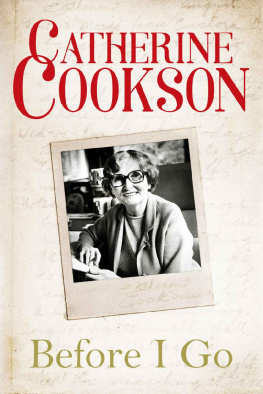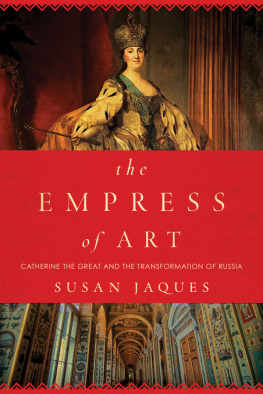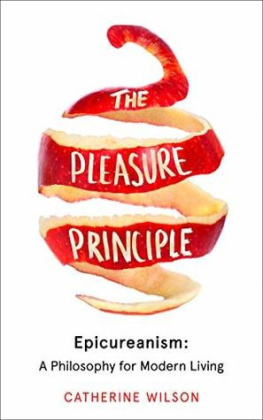Contents
Born in 1948 in Bois-Colombes, Catherine Millet is an art critic, curator and founder of the prestigious magazine ArtPress. Her 2002 memoir The Sexual Life of Catherine M. was translated into forty languages and has sold over five million copies, 250,000 in the UK alone. In 2005, she published the monograph Dal et Moi (Dal and Me). Jealousy (Jour de Souf-france) was published to critical acclaim in France in 2008 and spent many weeks on the bestseller list. Catherine Millet lives in Paris with the poet and novelist Jacques Henric.
The Sexual Life of Catherine M.
This is the most explicit book about sex ever written by a woman, though it is far from pornographic. Catherine Millet sets about coolly and rationally exploring her insatiable appetites and she has lived to tell a tale that is the opposite of lurid. It is a comprehensive and elegant performance Edmund White
It is Millets subversive achievement to describe pleasure for its own sake New Statesman
Millet is a woman who writes plainly; who tells the truth about desire Guardian
Graceful, thoughtful, oddly charming, and profoundly pornographic. A bold, intelligent, pioneering tour de force KirkusReviews
Keeps crudeness at bay through an aloof, gracefully crystalline style as elegant as any French pornography since de Sade Vogue (USA)
The porn most likely to be read by those who wouldnt be seen dead clutching a sweaty copy of Fiesta is The Sexual Lifeof Catherine M. Fine observations and precise prose style She fits neatly into a category of literary outrage The Big Issue
She proves again that Catholicism and filthy sex go together like salt beef and rye Independent on Sunday
Millets achievement is that she curates or, more accurately, catalogues her sexual adventures with no sense of shame or remorse Catherine Millet has more fun at the dentist than Ive ever had. If you want to know more about how to liven up root canal treatment, buy this book immediately Deborah Levy, Independent Magazine
The most honest book I had ever read on the subject of sex Rowan Pelling, Daily Telegraph
The unabashed erotica of The Sexual Life of Catherine M.
salutes the Marquis de Sade in a straight-talking romp through dozens of one-night stands catalogued with savage wit by a Parisian intellectual Katrina Dixon, Scotsman
Millets sexual aesthetic is a literary one, invoking Sade, Reage and Proust It is neither pornography nor her coy younger sister, erotica, but a work of libertine philosophy Lisa Hilton, Times Literary Supplement
j e a l o u s y
catherine millet
translated by helen stevenson

First published as Jour de Souffrance in 2008 by
Flammarion SA, Paris
First published in this translation in 2009 by Serpents Tail,
an imprint of Profile Books Ltd
3A Exmouth House
Pine Street
London EC1R 0JH
www.serpentstail.com
This eBook edition first published in 2010
The right of Catherine Millet to be identified as the author of this work has been asserted by her in accordance with the Copyright, Designs and Patents Act 1988
Copyright 2008 Flammarion
Translation copyright 2009 Helen Stevenson
Designed and typeset by Sue Lamble
This eBook is copyright material and must not be copied, reproduced, transferred, distributed, leased, licensed or publicly performed or used in any way except as specifically permitted in writing by the publishers, as allowed under the terms and conditions under which it was purchased or as strictly permitted by applicable copyright law. Any unauthorised distribution or use of this text may be a direct infringement of the authors and publishers rights and those responsible may be liable in law accordingly.
A complete catalogue record for this book can be obtained from the British Library on request
eISBN: 978-1-84765-299-7
Unless one believes in predestination, it is clear that the circumstances of any encounter with another person, which, for the sake of ease, we attribute to chance, are in fact the result of an incalculable series of decisions taken at each crossroad in life, which secretly steer us towards them. Even the most important of these encounters may not have been consciously sought, or even desired. Rather, each of us proceeds like an artist or writer, who constructs a piece of work through a succession of choices; a gesture or word does not inevitably determine the gesture or word which follows, but instead confronts the author with a new choice. A painter who has used a touch of red may choose to mute it by juxtaposing a touch of violet; he may choose to make it sing with a touch of green. In the long run, whatever mental image of the painting he may have started out with, the sum of all the decisions he takes, some of them unforeseen, will give a different result. Thus we lead our lives by a series of acts which are in fact far more considered than we care to admit since to take full and clear responsibility for them would be a great burden but which nevertheless set us on the path of people we have unknowingly been gravitating towards for some time.
How did Jacques face first register on my field of vision? I could not say. Elsewhere I have written that I was struck by his voice, as heard twice removed by a tape machine (it was a recording) and the telephone (down which someone played the recording to me). On the other hand, there is no visual image lodged in my memory signaling his epiphany in my life. A curious fact, since I am blessed with an excellent visual memory but have no ear at all. Perhaps it is precisely because my ear is relatively little used that I have managed to isolate one of the rare occasions on which it was sensitive, whereas my eye is so much in use and so ready to observe details, at times, it seems, indiscriminately, that I sometimes feel like one of those mad people who are unable to sift and order the visual signals which reach them from the outside world. Thus my first image relating to Jacques is a Gestalt, his presence as a dark, dense mass, inseparable from the surrounding space, which was lighter, white or rather cream coloured, its depth I remember this quite clearly delineated by a board fixed to the wall, serving as a work surface, and the door which led to the toilet.
I should say that we were having to concentrate on a page in a catalogue where there was a piece of text hed written, which we had to correct by hand. We had been working for several hours, sitting side by side in the narrow office. I can still see the page, the text printed in characters imitating those of a typewriter. I can also see the house of the friend where he took me to dinner once the tedious job was done, and the bed, doubling as a sofa, on which we sat chatting after the meal; I can even still make out the faces of one or two of the other guests. But what marks out Jacques at that moment is still not his image, but a very discreet gesture, in which he just brushed my wrist with the back of his index finger. The circumstances of this memory enable me to identify a phenomenon I have observed at the moment when sensual pleasure first starts to stir; my visual attention seems to focus less on the actual object of my desire than on what surrounds it. In fact it is a reflex we all have in public, to put people off the scent. It affords the twofold pleasure of contact and dissimulation: we gaze intently into the eyes of the person on our right, to distract attention from the person on our left, who is stroking our knee under the table. But could it not be, also, that we respond generously to the blossoming of one of our senses, so that, in this instance, even as my skin was enjoying the touch of a mans hand, softer than any I had ever known, or ever would know, my eyes could focus all their curiosity on his friends?













